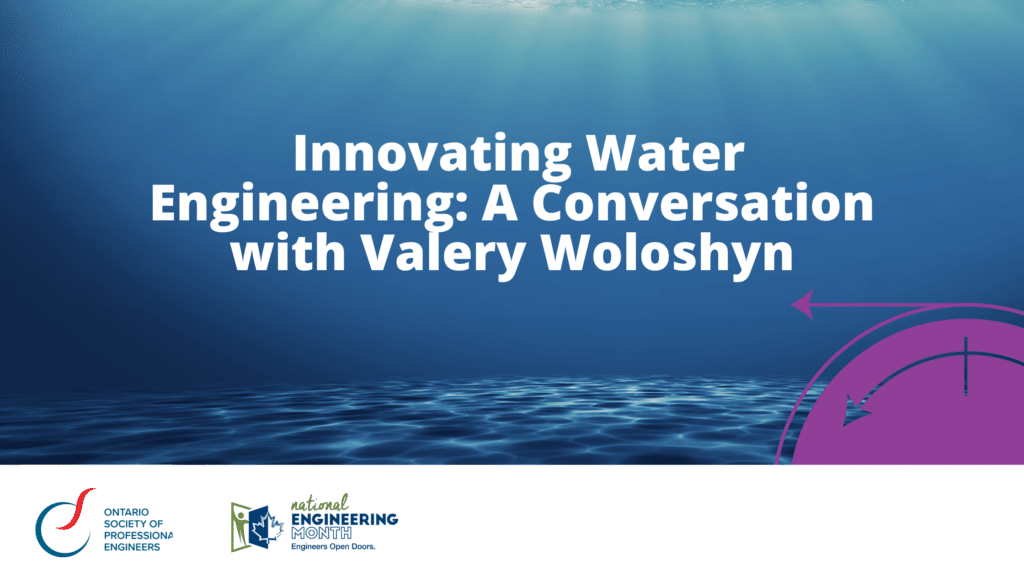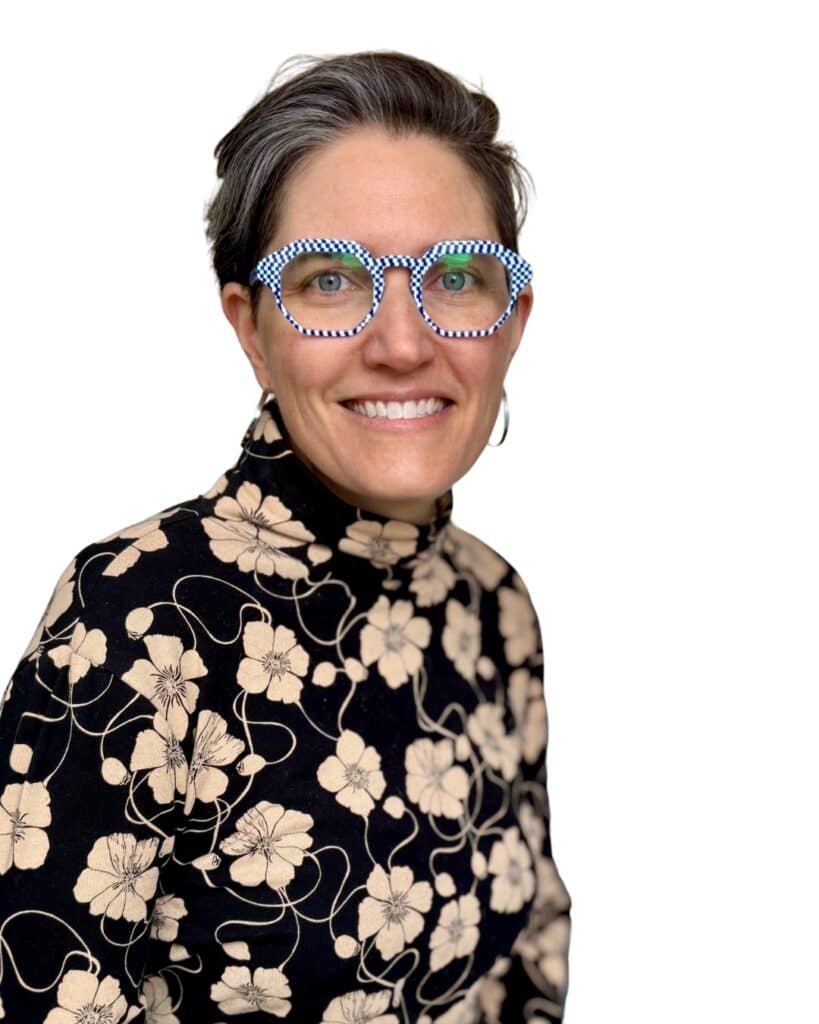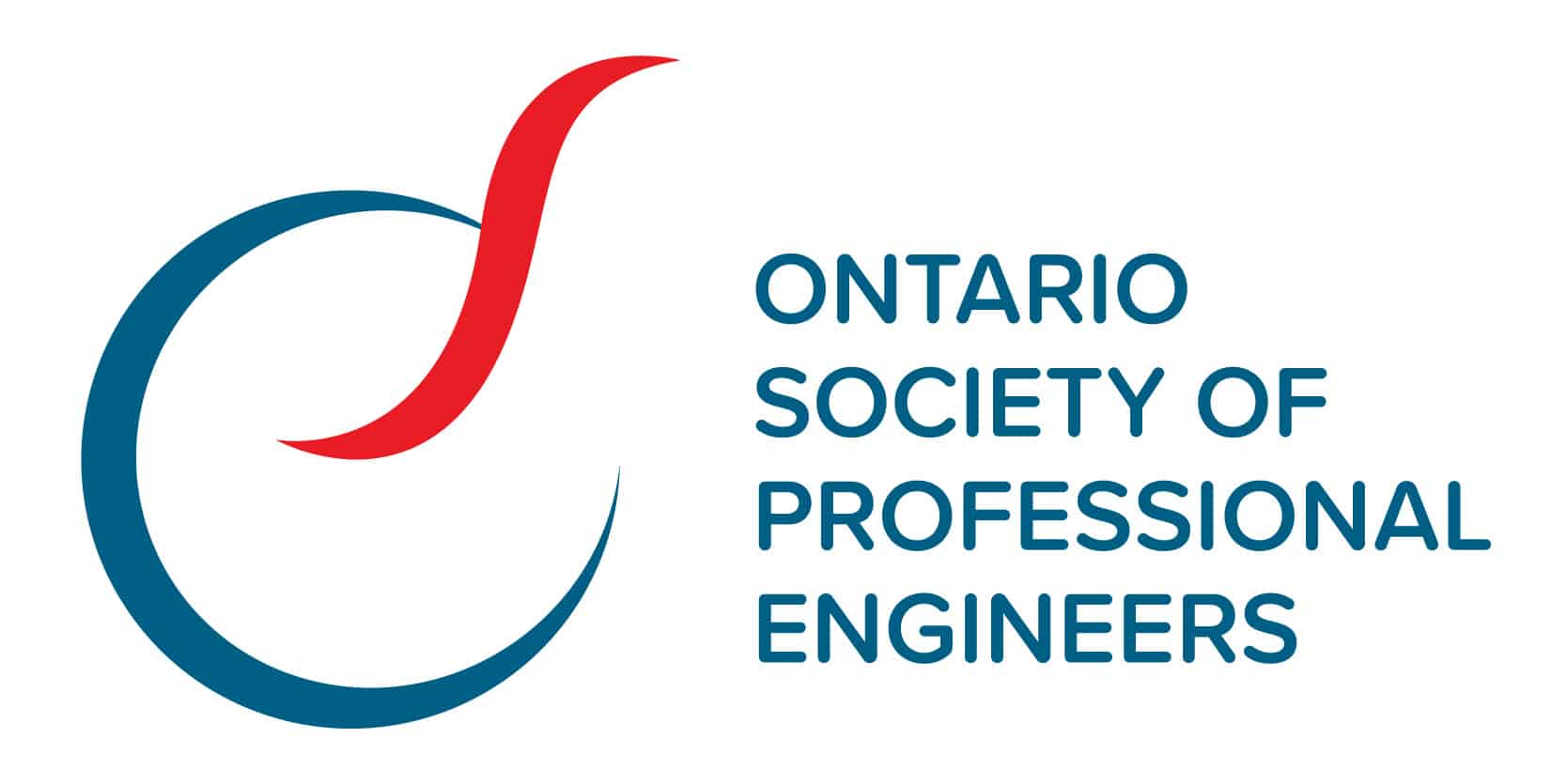
Throughout National Engineering Month (NEM) 2025, we’re connecting with leaders in Ontario’s engineering community to share insights and experiences that inspire the next generation of engineers. In this Q&A style interview, we speak with Valery Woloshyn, an environmental engineer who sits on the ACEC-Ontario Board of Directors and is the Regional Delivery Leader for Water in Eastern Canada at Stantec. In this casual and honest interview, we get to understand Valery’s career journey, some very interesting industry innovations, and her advice for aspiring engineers

Q: Can you tell me a little about yourself?
A: I’m an environmental engineer based in Toronto. As a kid, I loved math and science—I enjoyed recognizing patterns and problem-solving. I wasn’t sure what I wanted to be when I grew up, so I applied to three different university programs: Environmental Engineering, Environmental Science, and Anthropology. I was accepted into all three but ultimately chose Environmental Engineering at the University of Guelph, partly because my sister was also there and because I was drawn to the science aspect.
I’ll be honest—I didn’t love school. It was challenging, and I didn’t feel like I fit in. Luckily, very early on, I met two women in my program. We supported and motivated each other throughout our degrees. Being in a co-op program also helped because I got to apply what I was learning, which kept me engaged. Most co-op placements available at the time were in the pharmaceutical and oil & gas industries, which didn’t interest me. Then, I found a placement in drinking water treatment, and that was a game-changer.
A funny story—when I went to my co-op interview, I had just shaved my head. When I walked into the office, the co-op administration staff were in shock. When I met the interviewer, he also had a shaved head. We hit it off instantly, and I got the position. That placement turned into full-time employment after graduation.
At that time, the Walkerton tragedy had just happened in Ontario, leading to a major focus on drinking water safety. As a student, I helped develop engineering reports assessing several Ontario treatment facilities, and by the time I graduated, municipalities were implementing the recommendations. That’s how I started my career.
Q: How long have you been an engineer?
A: I finished school in 2003 but didn’t get my engineering license until 2011. I hesitated to apply at first because I wasn’t sure if engineering was the right path for me. Over time, I realized I truly loved problem-solving and the technical aspects of the field. So, I finally took the step to get my license.
Q: What about engineering keeps you passionate? Have there been any major innovations that have changed your field?
A: What keeps me engaged is working with people and solving problems—whether technical challenges or team dynamics. My role in project management allows me to collaborate across disciplines, which is always interesting.
A major change I’ve seen is how communication has evolved. When I started, we were still sending faxes. You had to be intentional with your messages. Now, communication is instant, and teams rely heavily on email and messaging platforms. Another big shift was moving from 2D to 3D CAD modeling. Some of my colleagues started their careers using drafting boards and adapted impressively to digital design tools. Seeing these changes firsthand has been fascinating.
Q: What emerging engineering disciplines do you find most exciting or transformative?
A: From my perspective in the water sector, I find bioengineering particularly interesting. Researchers are developing customized or engineered bacteria for wastewater treatment, which could improve the efficiency and reliability of treatment, particularly for pollutants of high concern. Materials science is another exciting field—membrane technology, for instance, has advanced significantly, leading to more effective and cost-efficient water treatment solutions. There’s also growing interest in UV-LED disinfection, which could reduce energy consumption and make clean water more accessible worldwide.
Q: How do these innovations impact your work?
A: As a project manager, I balance adopting new technologies with ensuring reliability. Our clients—especially municipalities and utilities—need solutions that meet existing and anticipated regulatory requirements, are safe to operate, cost-effective, have a responsible carbon footprint, and are resilient to climate change. The decision-making process is more complex than ever, requiring a multi-criteria evaluation approach.
Q: What skills are crucial for engineers interested in emerging disciplines?
A: Curiosity and a growth mindset are essential. The best engineers I know are constantly learning—reading journals, engaging with vendors, and looking beyond their immediate field for inspiration. Hands-on experience is also key. Engineers who spend time in the field gain a deeper understanding of design implementation and problem-solving.
Q: Can you share a project where you pushed the boundaries of what was possible?
A: One of my favorite projects was in 2009-2010, working with a direct filtration drinking water treatment plant struggling to meet just 40% of its rated capacity. Instead of building new filters or adding upstream plate settlers, we were able to optimize their treatment process using zeta potential analysis. With a relatively simple adjustment of changing their coagulant dose and adding a cationic polymer, we increased plant capacity by 50% and avoided a costly infrastructure expansion. It was a great example of how innovative problem-solving can lead to impactful results.
Q: How do you approach problem-solving in innovative or unprecedented situations?
A: Team collaboration is crucial. Bringing together people from diverse backgrounds sparks new ideas. As a project manager, I strive to create a safe space where everyone feels comfortable contributing. Encouraging different perspectives often leads to the best solutions.
Q: What advice would you give to students or early-career engineers?
A: Be open to different tasks and experiences—you’ll learn something valuable from every opportunity. However, and this is especially for women and gender-diverse folks, you also have to advocate for yourself. If you notice you’re being assigned more administrative tasks than technical ones, speak up and ask for more challenging assignments. Getting hands-on experience in the field is invaluable. And get involved in industry organizations! Networking through associations can open doors and help you stay informed about industry trends.
Q: What qualities do you think are essential for leading engineering innovation?
A: A growth mindset, strong communication skills, and awareness of biases. Great leaders recognize their biases and seek diverse perspectives to make informed decisions.
Q: How do you stay ahead of technological advancements?
A: I rely on my teams, industry publications, conferences, and vendor presentations to stay informed. Consultants are in a great position to learn from a broad range of projects and emerging technologies.
Q: What’s one piece of advice you wish you’d received early in your career?
A: Everyone you meet has something to teach you, especially those who operate and maintain the systems you design. You don’t have to tolerate disrespect or harassment to succeed. You can find advocates and allies in unexpected places.
National Engineering Month is about celebrating the contributions of engineers and inspiring the next generation. There are 31 days in March—31 reasons to get involved with NEM Ontario. Join us in shaping the future of engineering in Ontario. Attend events online and in-person March 1 – 31. , challenge you, and leave you with a lasting sense of pride. Come for the technical skills, stay for the community. Come for the inspiration, stay for the change. Come to connect, come to grow, come to be the future of engineering.


